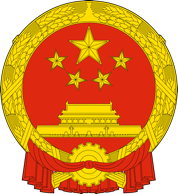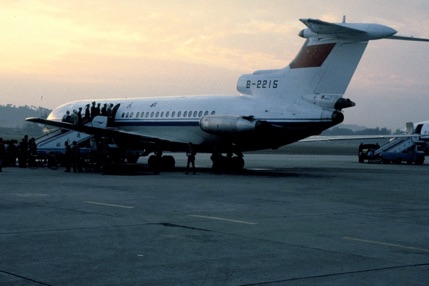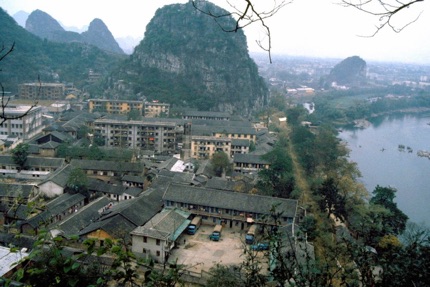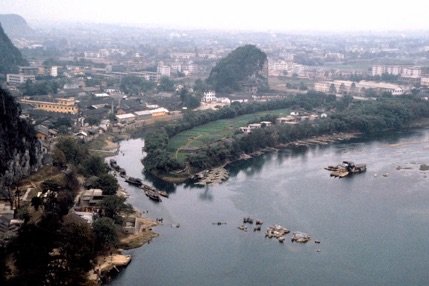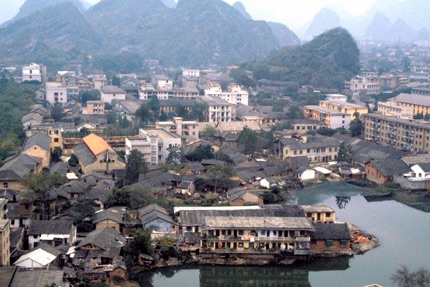China 1985

Kyrgyzstan and Tajikistan 2018

We were woken this morning at 5:15am, with bags out by 5:30am. We left the hotel at 5:50am for the airport where we had breakfast, and then caught the 7:30am CAAC flight in a British-made Hawker Siddeley Trident to Guilin. Guilin is famous for the multitude of steep limestone peaks which rise precipitously from the surrounding fields, lakes and rivers. We had a magnificent, though misty, view of the karst landscape as the plane approached the airport.
Compared with Guangzhou, Guilin was a very grey, colourless city, although this appearance was to some extent the result of the cloudy, almost foggy conditions prevailing. The buildings and architecture of Guilin are unspectacular, plain and typical Chinese 1950s style, but the city becomes extraordinarily beautiful because of its fairyland-like surrounding hills. Our local guide in Guilin, Mrs Song, could not speak English, being the German speaking guide. However, this apparent problem became real advantage, as her Mandarin was excellent, and she spoke clearly and simply to the students, forcing them to use their Chinese language skills. Mrs Song would often get the boys to repeat sentences until they had their tones correct, and it was not long before we were having some fascinating discussions with her about her experiences during the Cultural Revolution as a Red Guard.
We began our sightseeing of Guilin at Decai Shan (Folded Brocade Hill, named because the tilted layers of limestone resemble a pile of folded material; we were to learn that the Chinese have a great talent for identifying shapes in lumps of rock). It was a long climb, though not in any way arduous, up many steps and through the short (and very aptly named) Wind Cave, decorated with inscriptions and Buddhist sculptures, some of faces having been smashed during the Cultural Revolution. The views of the city, the surrounding patchwork quilt of the post land reform rural countryside, the traditional seven arch bridges and the nearby Li River were outstanding, particularly the small traditional boats plodding down the river under human power. At the top of Decai Shan, a paper cutter cut profiles of many in our group while we were admiring the scenery, although he seemed to have somewhat stereotyped views of Westerners’ profiles judging by the huge noses we saw on the profiles of our students. We then travelled closer into the city centre to Fubo Hill, which after another climb, offered even better views of the same scenery. Some of the students preferred to explore several large caves at the foot of the hill.
Our next stop was a small jade and wood carving factory run by the Guilin City authorities, but which for reasons of shortage of space, was located on a rural commune to the south-east of the city. The workers in the factory come not from the commune but rode by bicycle each day from the city. At first, we thought we were on the tourist route (which we were, in effect), until we reached a painting workshop. Our students’ Chinese encouraged the workers to let them have a try at calligraphy, which they did with great enthusiasm. We wound up converting a normal 15-minutes tourist stop into a stay of well over an hour as all the boys tried their calligraphy, and our Chinese Language teacher reciprocated by painting a metre long thankyou note in brushwork. Before leaving, we also had time to look around the vegetable fields, where women were pouring matured nightsoil from buckets onto the crops as fertilizer. The boys also had their first close look at traditional shoulder poles and that curious piece of ingenious Chinese machinery, the walking tractor.
After lunch, we had a look through Ludi Yan (Reed Flute Cave). This is a long (over one kilometre), gaudily illuminated series of large limestone caves, the highlight of which is the huge Crystal Palace of the Dragon King, which is considerably larger than our school’s hall. That night, we all enjoyed a well-earned rest, the boys resisting the lure of the Rong Cheng Disco at our hotel (what has the revolution come to when a disco can be found in outback China?).

Day 5
Guangzhou to Guilin
Saturday, 7 December 1985
